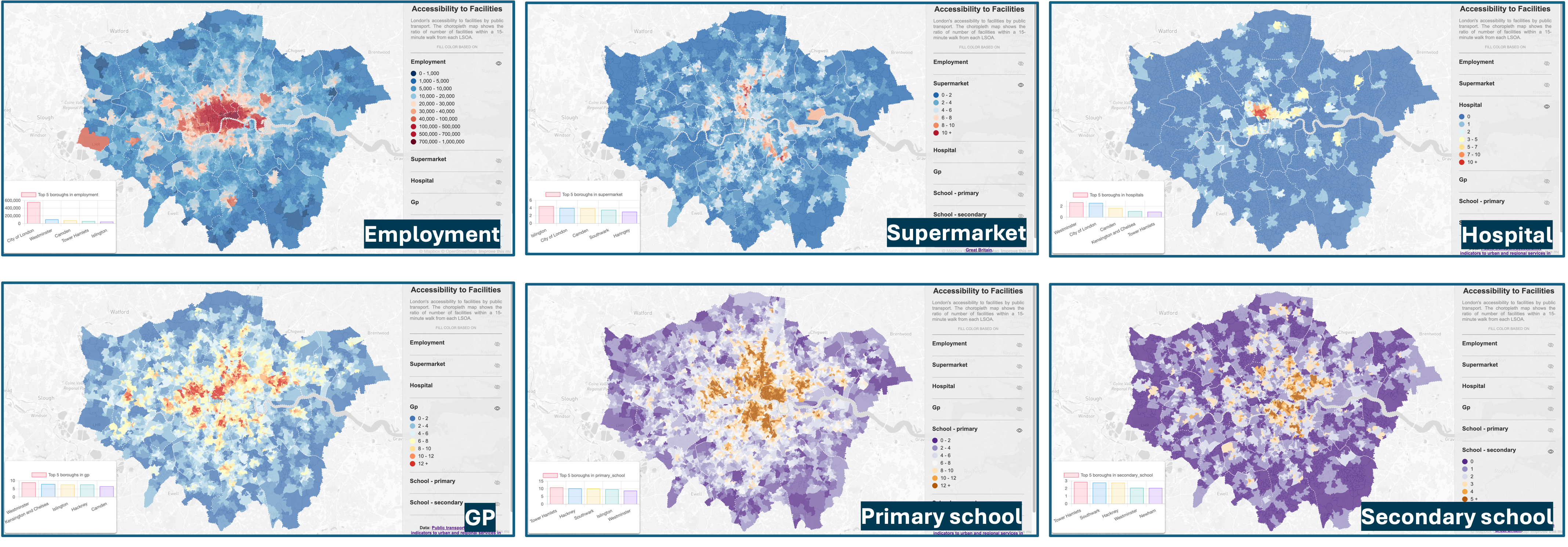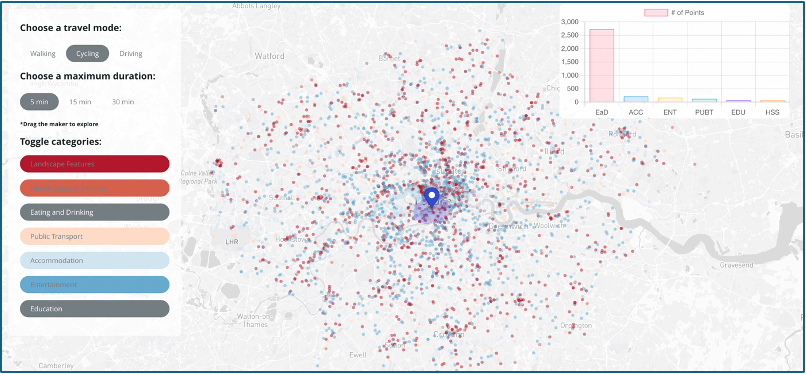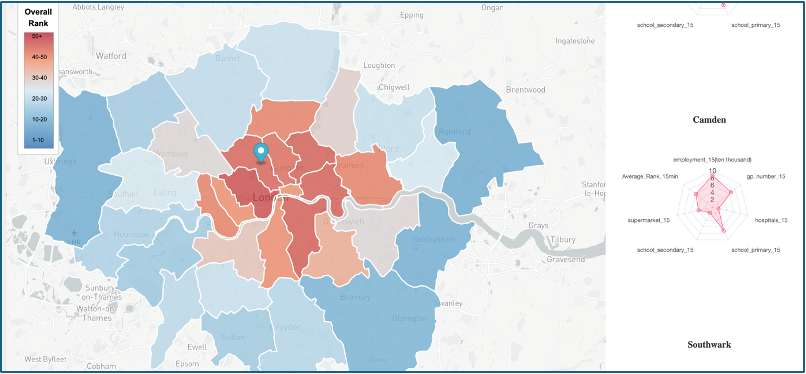1. Accessibility to Facilities Condition
Inner London has the most accessibility to most services such as employment, supermarkets, GPs, and schools by walk and public transport while some town centres including Croydon Town Centre, Stratford Centre, and transport centres such as Heathrow International Airport also have high accessibility to these services.
Among all services, hospitals somehow highly assemble in Westminster.


